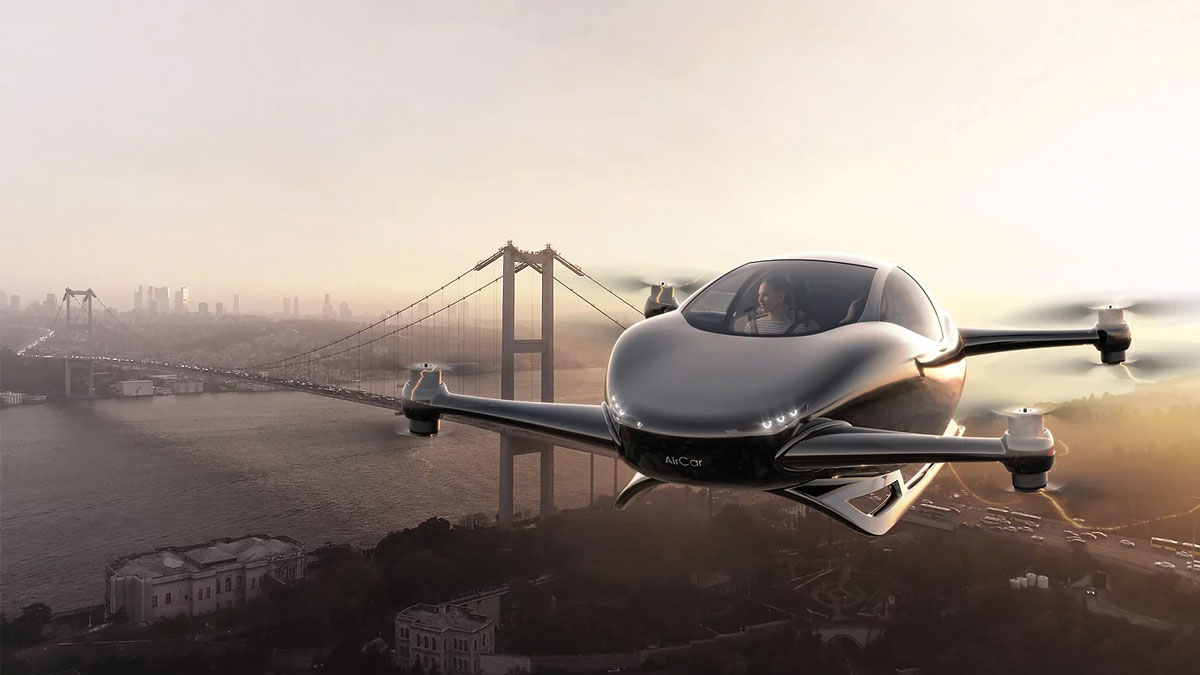Introduction: A New Era of Urban Transportation
Imagine soaring above traffic jams in a silent, emissions-free vehicle that takes off vertically from your driveway. This isn’t science fiction—it’s the promise of flying electric cars with vertical takeoff and landing (eVTOL) technology. As cities grow denser and road congestion worsens, innovators like Alef Aeronautics, Volkswagen, and ASKA are racing to turn this vision into reality. By 2030, experts predict these vehicles could redefine urban mobility, slashing commute times and carbon footprints. Let’s dive into the tech, trends, and trials shaping this airborne revolution.
What Is a Flying Electric Car?
A flying electric car, or eVTOL (electric vertical take-off and landing), combines the convenience of road travel with aerial agility. Unlike traditional aircraft, eVTOLs:
- Use electric motors powered by advanced batteries or hybrid systems.
- Employ multiple rotors (6–8+) for vertical lift, transitioning to horizontal flight.
- They are designed for short-to-medium urban trips (50–200 miles).
Key components include lightweight composite materials, autonomous navigation systems, and high-energy-density batteries. For example, Volkswagen’s V.MO “Flying Tiger” uses electrical steel in its motors to minimize energy loss, achieving a 200 km range with four passengers.
Vertical Takeoff Technology: How It Works
VTOL vs. Traditional Aircraft
Benefits for Urban Mobility
- Reduced Congestion: By utilizing airspace, eVTOLs could cut ground traffic by up to 30% in major cities.
- Faster Commutes: A 50-km journey drops from 90 minutes to 15.
- Eco-Friendly: Electric models produce zero in-flight emissions, with hybrids reducing CO2 by 50% vs. helicopters.
Innovations & Leaders in the eVTOL Race
1. Alef Aeronautics
- Model A: The first FAA-approved flying car ($300,000) transitions from road to biplane mid-flight, offering 110 air miles and 200 road miles.
- Model Zero: A prototype with a rotating body and mesh wings aims for 2026 production.
2. Volkswagen China (V.MO)
- Flying Tiger: This autonomous eVTOL uses eight rotors for vertical lift, targeting VIP shuttles before public use.
3. ASKA A5
- Drive-and-Fly Hybrid: Charges at EV stations, flies 250 miles, and drives like an SUV. FAA-certified for testing since 2023.
4. Airbus & Joby Aviation
- Airbus’s CityAirbus NextGen and Joby’s S4 focus on air taxi networks, with plans to launch by 2026.
Challenges to Overcome
1. Regulatory Hurdles
- The FAA and EASA are drafting air traffic rules for eVTOL corridors. Alef’s Model A required 2+ years for certification.
2. Safety Concerns
- Redundant systems (e.g., ASKA’s six rotors + parachute) and crash-resistant AI are critical.
3. Infrastructure Costs
- Cities need “vertiports” for takeoff/landing. Hyundai estimates $15B to build 1,000 U.S. sites by 2035.
4. Public Acceptance
- Noise levels and accident risks remain top concerns.
The Future Outlook
By 2030, analysts project:
- 15,000+ eVTOLs in operation globally (McKinsey).
- $30B market value, driven by air taxis and emergency services.
- Price Drops: From $300,000 today to $35,000 by 2040 (Alef’s goal).
Conclusion: The Sky’s the Limit
Flying electric cars with vertical takeoff are poised to transform how we live, work, and travel. While technical and regulatory challenges persist, leaders like Alef and Volkswagen are proving that urban air mobility isn’t just possible—it’s inevitable. As battery tech advances and cities adapt, the dream of zipping across town in a silent, zero-emission eVTOL is closer than ever.
What do you think? Will flying cars become mainstream, or are they a niche solution? Share your thoughts below!


